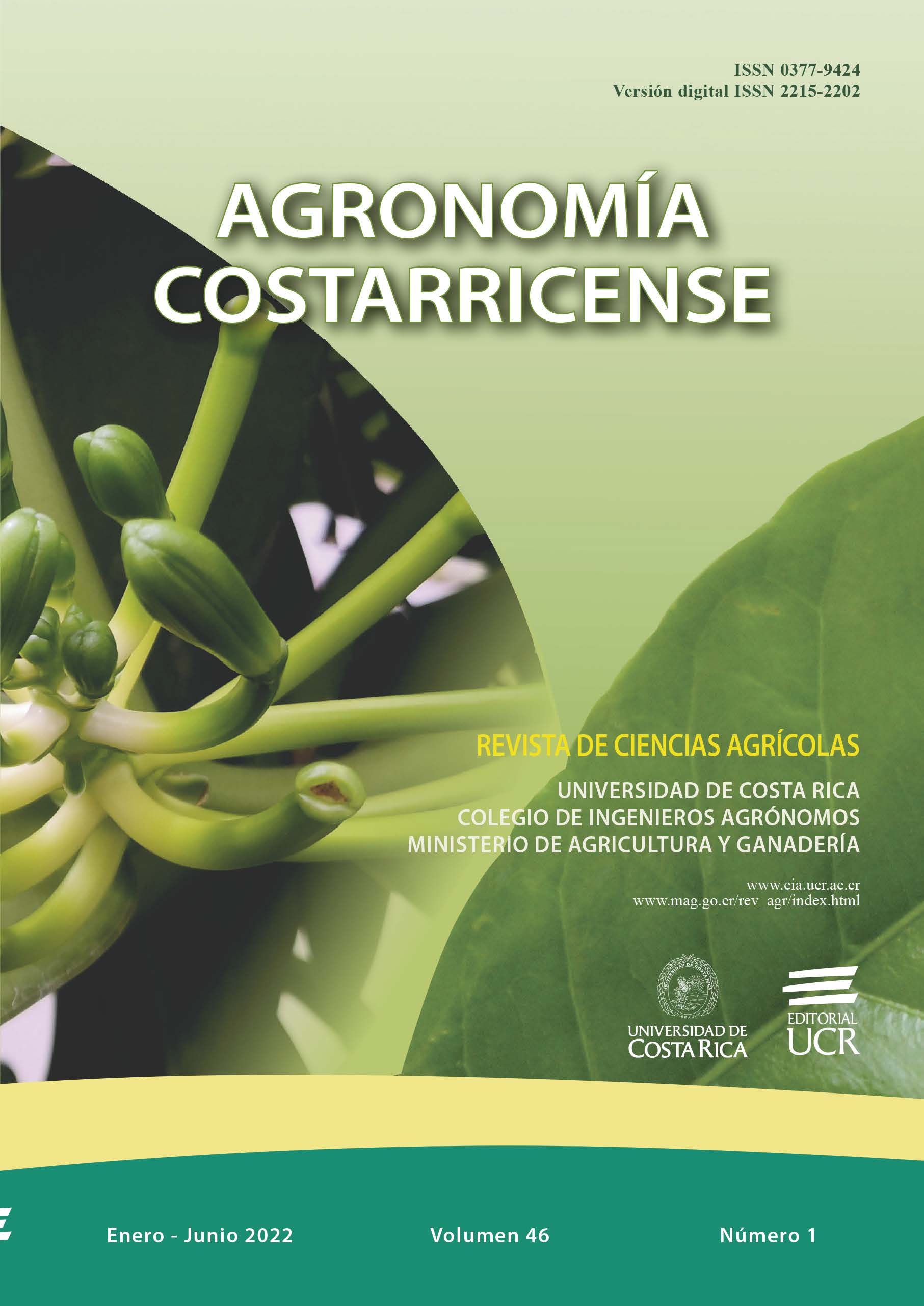Abstract
Introduction. Nosemosis is the most widespread of adult honey bee diseases that cause significant economic losses worlwide. Honey bees are parasitized by 2 fungus species, Nosema apis and Nosema ceranae. Objective. The amount of spores of Nosema spp. in group and individual samples of adult bees was related with precipitation and relative humidity conditions. Materials and methods. This study was conducted from July to November 2017, in 10 africanized honey bees colonies in Atenas, Alajuela. A 100 foragers bees were collected per colony to examine them at the Bee Pathology Lab of CINAT. For the group analysis, the abdomens of thirty adult bees were cut and macerated together in 30 ml of distilled water. Nosema spp. spores were identified using a light microscopy at 40x magnification and counted with the hemocytometer. For the individual analysis, the same method was used. Precipitation and relative humidity conditions during the study period were related with the amount of Nosema spp. spores. Results and conclusion. The microsporidium Nosema spp. was found in all colonies. In July, the highest number of Nosema spores were quantified, with an average of 20 360 000 ± 1 586 957 per bee in group analysis and 12 749 733 ± 867 232 in individual analysis. In the following months adecrease in the number of spores was observed and the lowest amount of spores was recorded in November, with an average of 4 375 000 ± 874 132 and 2 087 708 ± 398 895 of spores in group and individual exam, respectively. When relating the conditions of precipitation and humidity with the amount of spores, September presented the highest amount of rain and a high percentage of humidity, nevertheless, it did not correspond to the highest infection level of Nosema spp., which occurred in July. Meanwhile, November was the least rainy and humid month and in turn presented the least amount of spores.


